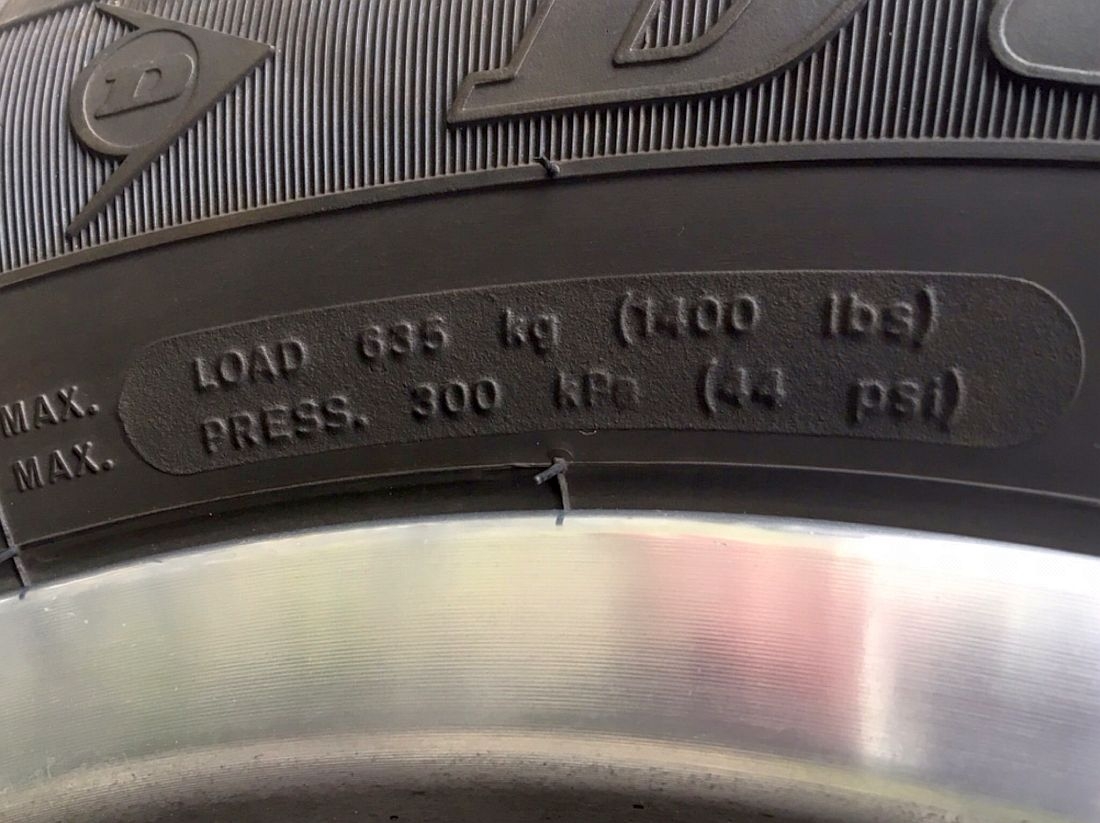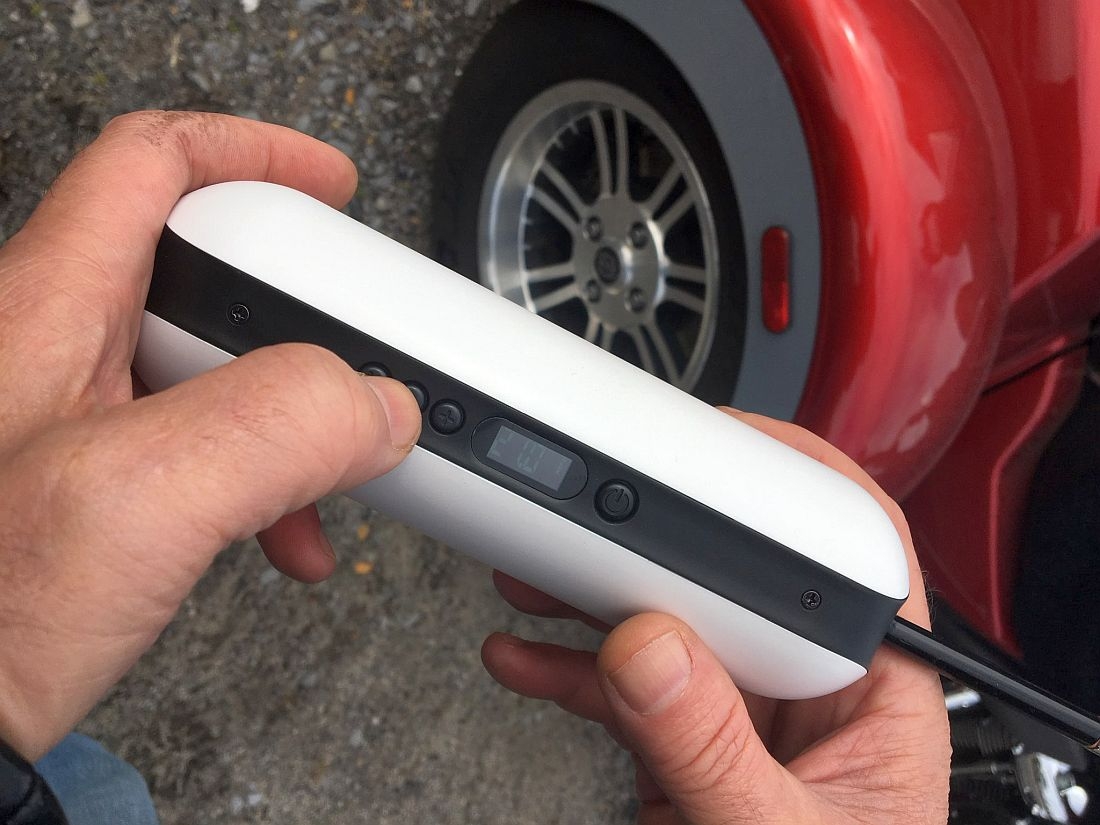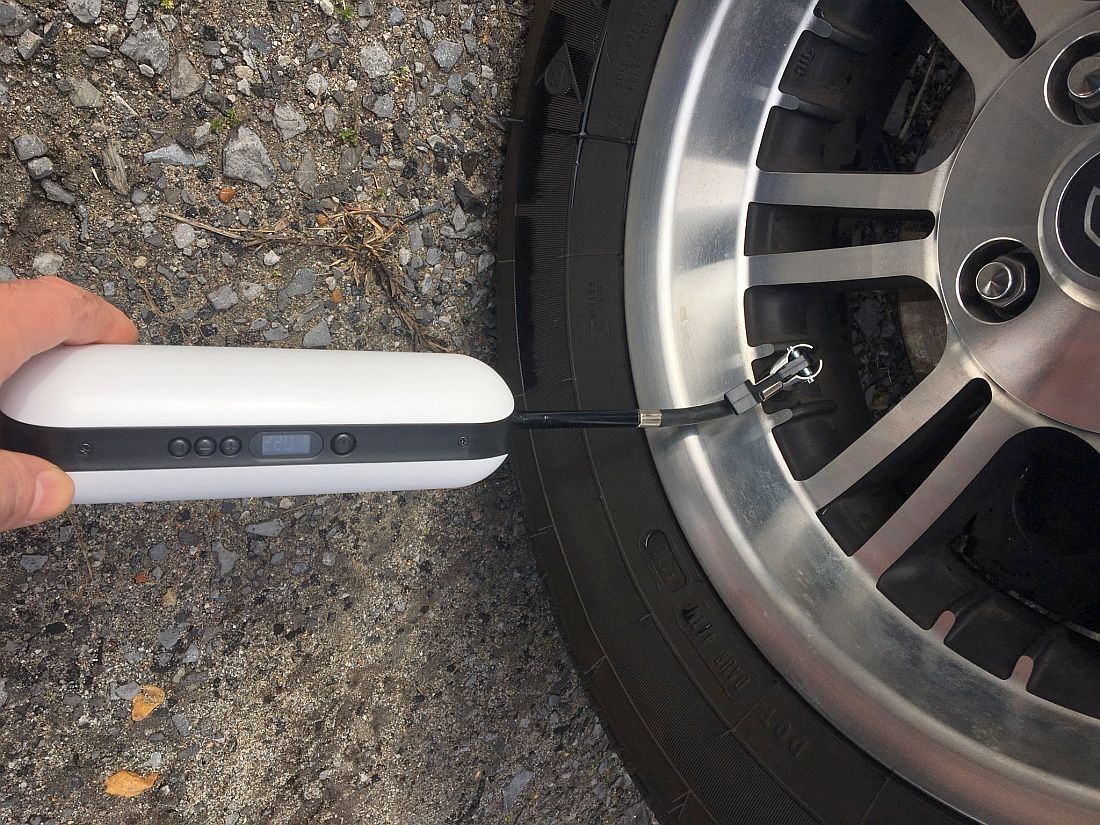There are lots of things You can do to get a Softer, Better Ride out of Your Trike.
A Common Misconception:
Harley Trike Rear Tires should be run at the pressure stamped on the sidewall.

The "Max PSI" numbers are for the load index for the tire itself; stating what is the most pressure that tire is built to handle when used on a car. These are passenger car tires, but we are using them on Trikes, so the PSI is different for the Trikes.
The first thing to do is check your tires for overinflation. This causes a very uncomfortable, unpleasant ride. HD recommends 26 psi in the rear tires. However, when dealerships deliver bikes, many do so with 36 psi. Your Trike will literally ride like a buck-board at this tire pressure.
Tire pressure is probably the most easily adjusted variable on your trike but the "just right PSI" is often at question.
Kevin gives his input, opinion, advice, and suggestions on how to get a better ride in the questions and answers below.
Question:
What's the correct front & rear tire pressure(PSI) when riding two-up with luggage?
Answer:
I run 21-22 PSI in the rear tires all the time; 2-up & loaded down, gravel roads, asphalt, tearing thru the curves, etc.
At first I thought lowering the PSI that low would pop a bead in hard cornering. We've ridden well over 100K miles with no issues. .
Well, I say no issues, BUT the center of the tread will wear out faster at those lower PSI's. But that means 50k out of a pair of tires instead of 60k.
There are also other tires, the Goodyear Comfortred, that have a softer sidewall and provide a smoother ride. In those I run 23-24, otherwise they wallow too much in the curves.
Front tires I run the recommended...36 on the OEM and 40 on the Avon.

Question:
Why do the Center Treads Wear faster - Underinflation or Overinflation?
Answer:
It could be either/or.
Talked to a bunch of tire guys and realized that these are car tires, that are made for a much heavier load.
They are rated for 1400 lbs each and have an inflation pressure of 44 psi. btw, they have a speed rating of 118 mph
So, we are using them on a Trike that weighs, with a heavy load, under 2,000 lbs. At the most we are putting 1,000 lbs on each tire, more likely in the 600-700 range most of the time.
HD recommends a PSI of 26 (which is the lowest they can legally state), but the tire is designed for 44 psi.
The reason that there will be more wear in the center of the tire is because the sidewalls are designed for a heavier load and to keep the tread flat (parallel) with the ground at 44 psi.
When we run a lighter load, and the psi at 26, or 23 or 21, the tread will balloon a bit, which will wear the center faster.
This will be more pronounced at higher speeds (also from doing burn-outs).
Mystery explained.
Question:
How do you know if your air gauges are dead on?
Answer:
It can be a bit of a chore to know if the gauges are dead-on, even the digital ones. I usually check the various ones I have a couple of times a year, and chuck any that are no longer accurate.
Recently I have been using a digital, usb rechargeable, pump (pic below). Set the PSI and push start. It shuts off when it hits the target PSI I set. It makes life MUCH EASIER. You can see it HERE.

Question:
Besides adjusting the PSI, what else can be done to get a better, softer, more comfortable ride?
Answer:
In addition to getting the right PSI, you can soften up the bumps some with a Convertible Comfort Lift™ which you can see HERE.
The best thing you can do is get some Trike Series Shocks™. Shocks that were specifically designed for the Harley Trikes to give the most comfortable ride And a more stable/flatter ride. You can see details on them HERE.
There is a full report on Rear Suspension that you may find useful HERE.
Here's just one of the vids we have on Trike Rear Suspension...this shows some testing-


6 Item(s)
Kevin
posted on 1/10/2021 12:51 PMI've never used tire dressing, so don't know if it would run down onto the treads and cause one of the three tires to lose traction. But even if it did, it would not contribute to a low side or high side like it could on a 2 wheeler.
Not always, but sometimes, I like to break the back end of the Trike loose and do some drifting. It is amazing how controlled the HD Trikes are in a drift...very predictable, no surprises.
Jim Sturtz
posted on 1/10/2021 11:21 AMKevin
posted on 9/19/2020 5:37 PMIt is not a big problem...only one of making a clank when you hit a big bump and top out the suspension. It won't hurt anything.
I don't know which Comfort Lift™ you have, but you can call the shop or email during the week to get some help if you'd like.
662-420-4891 or [email protected]
gary osmun
posted on 9/19/2020 2:09 PMTom Clark
posted on 5/12/2020 10:07 PMAnother question not related I want to purchase your chrome2 tone horn which you say doubles the sound of the stock horn. I have installed the Love Jugs a few years ago, will your horn still fit where the original horn is?
Thank you
Tom Clark
With the 1.5" Tank Lift you'll be able to get to both fronts and the left rear easily. The right rear, even with the Deluxe option, you will probably have to lift the rear of the tank a bit to get to that plug. But that is easy enough, just loosen two bolts.
If you have the LJ Mighty Mites, the air horn will fit. If you have the larger LJ fans, I don't believe that air horn will fit in the stock location.
Fred Moran
posted on 5/6/2020 10:28 PMCheck out the video at this link- https://www.youtube.com/watch?v=f-wntxTmJyE
I personally like the 1.5" on the Tri Glide, just make sure to follow the directions for checking clearances that can be found at this link-
http://www.dkcustomproducts.com/touring-model-tank-lift-kit-dk-trg-tlk.htm
Always feel free to call or write us with any questions at 662-252-8828 or [email protected]
6 Item(s)